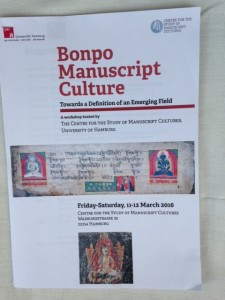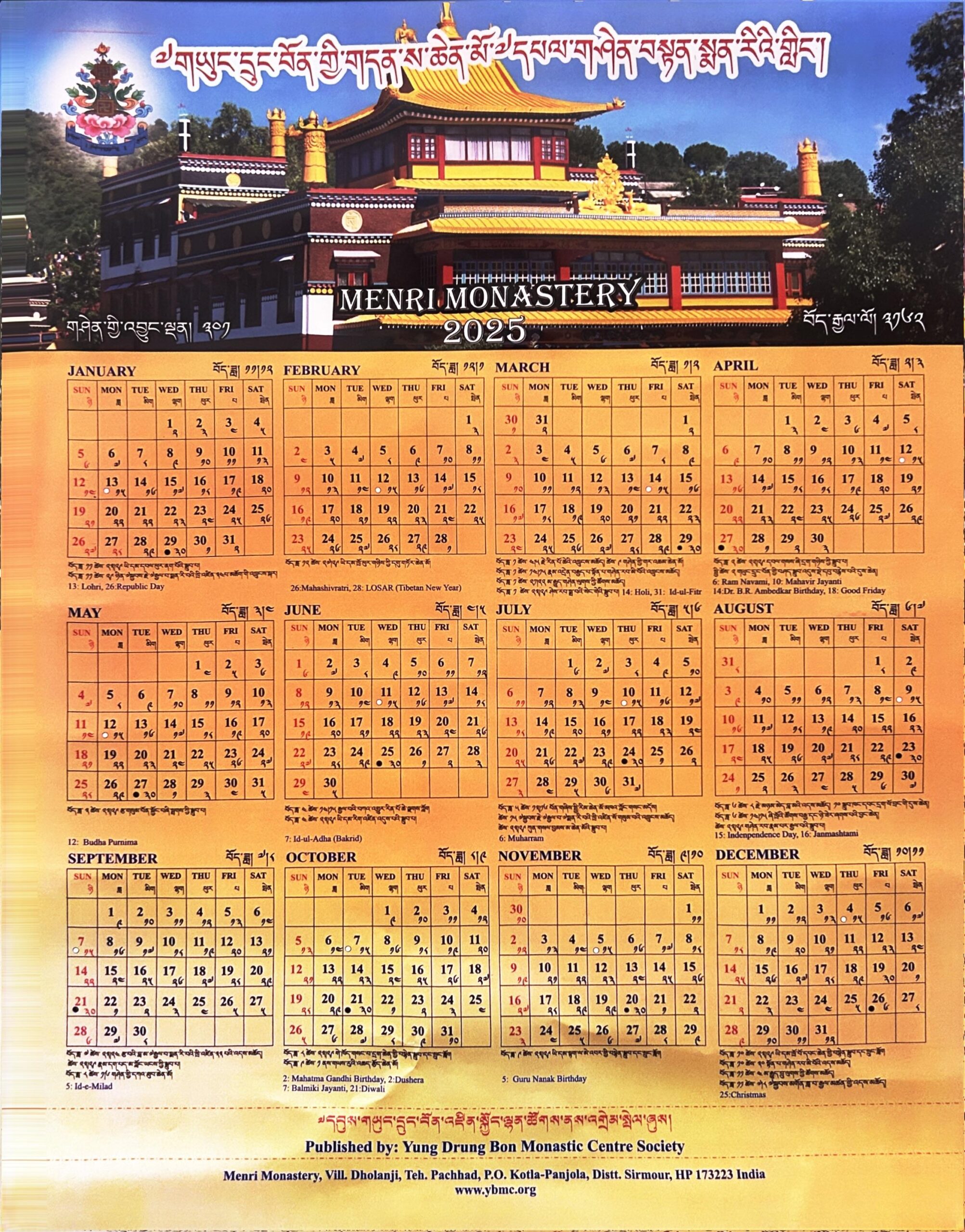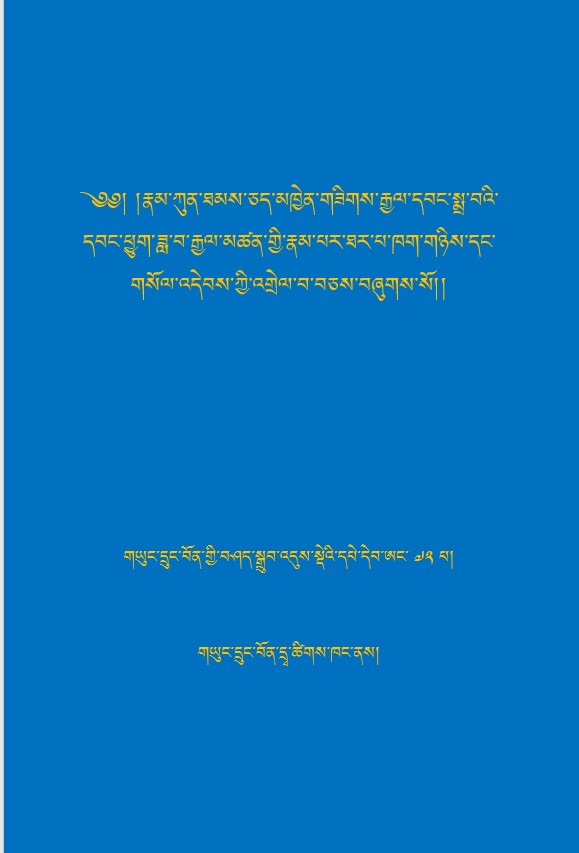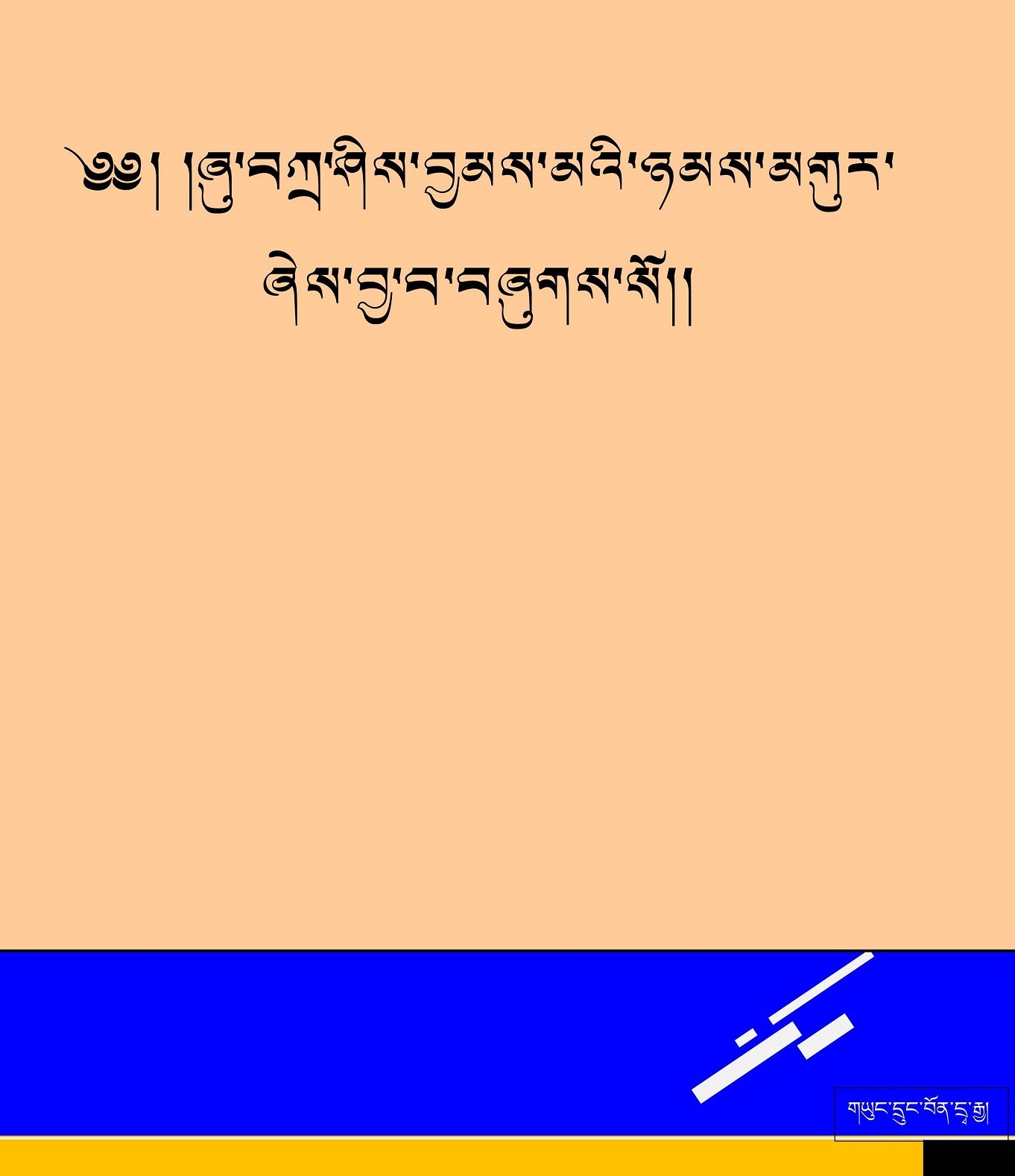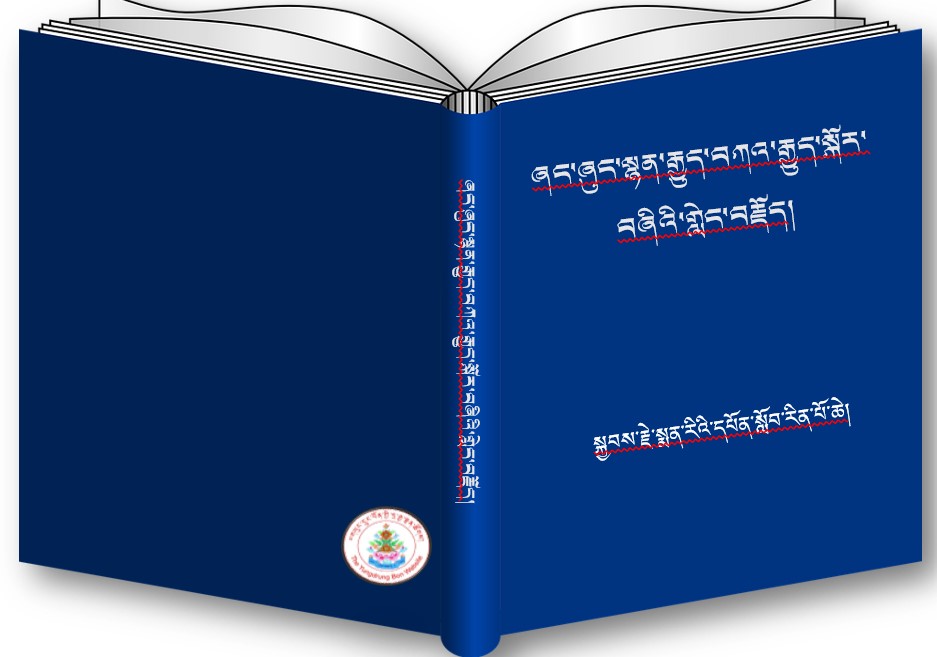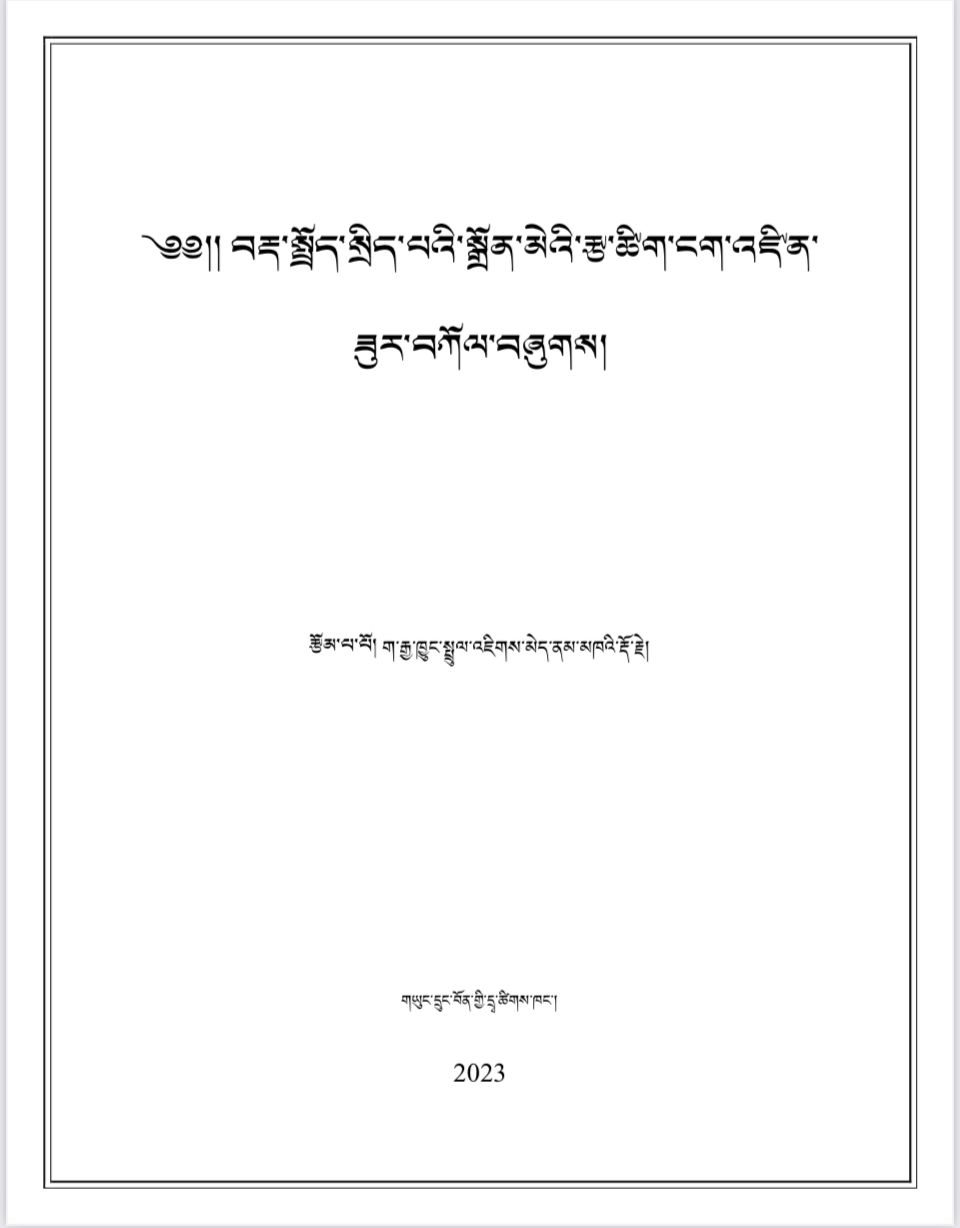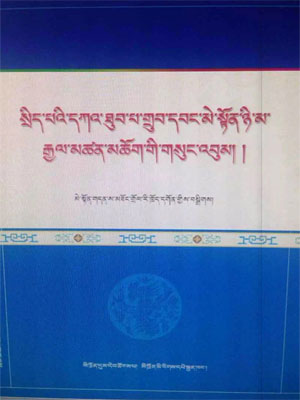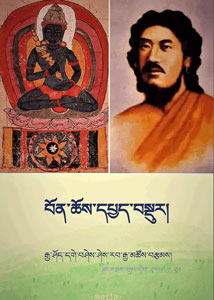ཉེ་ཆར་ཕྱི་ལོ་༢༠༡༦ཟླ་བ་གསུམ་པའི་ཚེས་བཅུ་གཅིག་དང་བཅུ་གཉིས་རེས་གཟའ་པ་སངས་དང་སྤེན་པ་གཉིས་ལ་འཇར་མན་རྒྱལ་ཁབ་ཀྱི་གྲོང་ཁྱེར་ཧན་བར་ཀིའི་སློབ་ཆེན་དུ་རྒྱལ་སྤྱིའི་བོན་གྱི་ཡི་གེ་བྲིས་མའི་ཤེས་རིག་སྐོར་གྱི་ཚོགས་འདུ་ཞིག་གཟབ་རྒྱས་ངང་འཚོག་པ་རེད།
ཚོགས་འདུའི་སྟེང་རྒྱལ་ཁབ་བཅུ་གྲངས་ཙམ་གྱི་མཁས་དབང་རྒན་པ་དང་འབུམ་རམས་པ་གཞོན་པ་མང་པོ་ཕེབས་གནང་ཡོད་པ་རེད། རྒྱལ་སྤྱིའི་བོད་རིག་པའི་ཚོགས་གཙོ་ཟུར་པ་མཁས་དབང་མཁར་རྨེའུ་བསམ་གཏན་དང་རྒྱལ་སྤྱིའི་བོད་རིག་པའི་ཚོགས་གཙོ་ཟུར་པ་གཡུང་དྲུང་ཚེ་དབང་Charsles Rambel དང་། དེ་བཞིན་མཁས་དབང་རྒན་པ་Per Kvaerneལགས་དང་། Dan Martinལགས། མཁས་དབང་Marc des Jardins ལགསདང་། Daniel Berounskyདང་། Michael Friedrichདང་། Agnieszka Helman-Ważny བཅས་ཀྱི་བོན་གྱི་གནའ་བོའི་ཡི་གེ་བྲིས་མའི་ཤེས་རིག་སྐོར་ལ་གཏམ་བཤད་གནང་ཡོད་པ་རེད། མཁས་དབང་རྣམ་པའི་གསུང་བཤད་སྙིང་བསྡུས་གཤམ་དུ་བཀོད་ཡོད།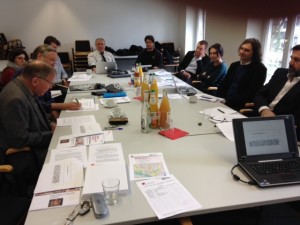
Abstracts
The Nyen Collection (Gnyan ’bum): three versions of an anthology of Tibetan myths on Nyen
Daniel Berounsky
The Nyen Collection (Gnyan ’bum) represents a corpus of texts with apparently ancient traits: Shenrab Miwo is devoid of any characteristics of a ‘Teacher/Buddha’ (ston pa) figure in its myths, and the ‘Wise Bat’ (sgam po pha wang) appears there in the role of a helper of priests. One of its versions constitutes the whole volume 78 of the Bon Kanjur. The second version is much shorter and appears among the texts collected in the so-called New Collection of Bonpo Katen Texts. The third version was photographed in Amdo by Ngag dbang rgya mtsho from Lanzhou University. All the three versions are obviously interrelated, but the wording of the particular texts they contain differs to a large extent. All of them refer frequently to smra beings associated with Ldong clan of Nam locality. The basic characteristics of these versions and some questions pertaining to their origin will be discussed.
Naxi manuscripts in the West: a survey of collections and scholarship
Michael Friedrich
Since the early twentieth century Naxi (sometimes wrongly called Mosuo) manuscripts were bought by Western collectors and institutions. The talk will introduce the major collections in the West and summarise the main topics of Western scholarship on the Naxi corpus.
Science, technology and local knowledge: Potential approaches to the material analysis of Bon manuscripts
Agnieszka Helman-Ważny
Tibetan books, of which Bon religious manuscripts constitute a category, have not been traditionally viewed as artefacts in their own right with a specific form and technology. Moreover, our knowledge about regional differences in book and paper history across the Himalayas has so far been very limited. In recent years, however, some scholarly works on the subject have been published, and interest in the codicological study of Tibetan books
has increased greatly. These changes have altered the way in which Tibetan manuscripts are now perceived by both Western and Tibetan scholars. The numerous manuscripts of the Bon religion have not as yet been clearly identified as a distinct corpus, and thus have not been the subject of codicological and material studies despite their importance for the study of history and religions of Central Asia. The aim of my work is to achieve an understanding of Bon manuscripts not only via their content, but also as distinct forms of material culture with a unique place in world’s heritage.
The production of manuscripts in the Himalayas is usually based on resources in relatively close proximity to their usage. This hypothesis is supported by my earlier research on Tibetan books. Thus Bon manuscripts, which were produced by both Bonpo and Naxi communities in various geographical locations across Central Asia, might also signal regional patterns and production habits related to local plant resources. Advanced scientific methods allow us to detect new details of book technology and paper composition and to reconstruct local resources and book production habits.
This presentation will explore the possibilities for identifying the material features that would allow us to distinguish a manuscript as Bon. I will discuss my preliminary results for paper analyses of both Bon and Naxi manuscripts in the broader context of my earlier research on Tibetan books.
Grimoires and ritual texts in Bon: two examples of ‘personal use only’ texts
J.F. Marc des Jardins
Two copies of handwritten manuscripts of Bon esoteric material are presented here for preliminary examination. The first, a photograph of a photocopy of a handwritten ‘secret instruction’ (man ngag) entitled: Man ngag ’bar ba bka’ rgya ma rdzongs ’phrang sa ma ya rgya rgya. It is a very private (yang gsang) document dealing primarily with magical methods to secure various mundane outcomes and which was meant strictly for private usage and not to be shared. Its content presents very abbreviated and unclear guidelines, spells and other methods to manifest wealth, love, and the killing of enemies as well as divination, calling spirits, conversing with the dead and many more. The text presents complex challenges with its cursive script, which uses a great number of abbreviated forms (bskungs yig), recurring symbols whose meaning are unclear, as well as diagrams to be used as talismans, linga and others.
The second manuscript situates itself in the Dbal gsas rngam pa cycle and dating prior to the formation of the contemporary Chinese state (i.e. 1940). It is incomplete and is accompanied with ancillary drawings and notes indicating its use for spells binding and other magical operation. It is entitled: Spyi spungs skor gsum gyi (yang) Huṃ bcud rtsod pa bzlog pa’i ’khor lo dbal gsas rngam pa’i las rim and appears to be similar to the one contained in the Bon bka’ brten 027-21: 21-41. The manuscript is replete with abbreviated forms, and
the extent to which the appended material was to be used in conjunction with this text is also unclear. The interest of this text lies in its age and its status as an isolated rite aimed at achieving a number of different designated results. It also belongs to ‘personal use only’ texts which were probably meant to augment the ‘magical’ abilities of their adepts. This study is a preliminary one which intends to present the content of these documents in details, highlighting problems in ascertaining the meaning of their narrative as well as the implications in regard to practice and desired results by the would-be magician.
Gold-lettered and other Bon manuscripts in the Potala Palace, Lhasa
Samten Karmay
It is only very recently that we learned that catalogues were being made of manuscripts and printed works kept in libraries such as those of gNas bcu lha khang and the Gaden Photrang. Both are located in Drepung, but I have been unable to establish whether or not they have been published. On the other hand, I did manage to obtain a copy of a catalogue of the manuscripts and printed works of the Nyingma tradition kept in the Potala. This catalogue lists 1543 manuscripts and printed works (title: rNying ma’i gsung ’bum dkar chag; the name of the publisher and date are not given). I was told that it was the beginning and would be followed by the catalogues of other religious schools, but nobody has ever mentioned that there were Bonpo manuscripts in the Potala. In this presentation I will give an account of how I in fact saw the gold-lettered manuscripts of the Bon tradition in the Potala, but unfortunately was unable to consult them.
A Bon Historiographic Text: the Grags pa gling grags. Questions arising from the four textual variants
Per Kværne
The presentation will examine the relationship between four manuscripts of the Grags pa gling grags, a twelfth-century historiographic text. The work deals with the geography of the world, placing Tibet in the centre; the origin of Bon as taught by the divine Teacher of Bon, Tönpa Shenrab; the origin of the Tibetan kings and the vicissitudes of the Tibetan royal dynasty, and its relationship with the Bon priests; and with the implantation of Buddhism in Tibet. It deals in detail with the fateful clash of Bon and Buddhism in the eighth century CE during the reign of King Khri Srong lde btsan, but according to a narrative which differs fundamentally from that of contemporary twelfth-century Buddhist writings: the Tibetan king is depicted as weak and irresolute, and Padmasambhava as a cynical purveyor of false doctrines, far removed from the original teachings of Shakyamuni who, in the view of the Grags pa gling grags, taught nothing that was not compatible with Eternal Bon. Hence the text presents a radical alternative to the standard, Buddhist version of the central characters and events linked to the introduction to Buddhism to Tibet. The paper will
discuss the origins of the manuscripts, spelling and other variants, the problem of one text being more extended than the others, and so forth, and will also give a brief presentation of the contents of the text.
Manuscripts of the works of an important Bonpo author Sga- ston Tshul-khrims-rgyal-mtshan (ca. 14th Century)
Dan Martin
This presentation offers little more than an initial, general assessment of the significance of Sga-ston as an interpreter of Bon traditions, particularly in the areas of history, scriptural studies and cosmology. The two main aims will be simply [1] to gather together what little could be found out about his life and historical circumstances and [2] to find out what works he composed, making a listing of them all, since no Collected Works appears to have ever been made and his works have been published here and there, with some important works appearing only during the last decade, with at least one of them still unpublished. At present, I have identified about a dozen texts he apparently composed (in one case, at least, an anthology based on his works). They will be arranged according to their five main subject areas: A. Scripture. B. History. C. Cosmology. D. Vehicles & Paths E. Dhāraṇī Texts.
A comparison and preliminary study of le’u manuscripts from ’Phan-chu, The-bo and lDom-khrom
Ngawang Gyatso
In the communities of ’Phan chu and The chu in mDo smad there is, to this day, a very long and unbroken tradition of Bon practitioners known variously as a myes le’u, srid pa’i le’u, mgon po le’u or lha bdag le’u. The ritual texts they use are known as le’u yig. The le’u texts are different in content from the recitations and texts that are used in Bon monasteries. In terms of the “Nine-Vehicle” system and the “Four doors and the treasury” scheme, their content corresponds respectively to the four vehicles of the Bon of Cause and of Black Water Bon. There are some local variations in what le’u texts are called, the number of texts used, and their content. In Bab bzo, in Upper ’Phan chu they are referred to as either le’u yig or lung yig. Bab bzo has long been a Bonpo area that has preserved an unbroken le’u tradition, and since there are le’u here who are familiar with the content of the texts, the conditions for research are ideal. It is generally said that there are four volumes of le’u texts that are used in the Bab bzo villages. These are said to be the teachings of gShen rab’s father, rGyal bon thod dkar, and therefore a more archaic system. Having been going to Bab bzo to carry out research on le’u texts over many years, I have been able to establish that there are indeed four volumes. These are: Blo ’dzin (“By Rote”); Zhag gcig ma (“Single Day”); brNgan gzhung (“Offering Text”); and Sel gzhung (“Purification Text”). The first of these derives its name from the fact that there is in fact no text, and the recitations
are performed from memory. The second, as the name suggests, has to be recited in the course of a single day. The third deals with offerings to mountain gods, and the fourth is concerned with the removal of different kinds of pollution. The presentation will also discuss the different ritual activities of the le’u priests.
Bönpo and Naxi ritual texts: some more common features
Charles Ramble
The influence of Bon on the Naxi religion has been pointed out by various scholars, including Joseph Rock, Rolf Stein and, more recently, Anthony Jackson. This influence is to be seen most obviously in the names of the mythic founder dTo-mba shi-lo (<sTon pa gshen rab) and Shi-lo mi-wu (< gShen rab mi bo). Just how this influence found its way to Yunnan is not clear. It is unlikely that the Naxi dto-mba/dongba are the heirs of a tradition that their forebears received directly from Bonpos who fled Central Tibet in the eighth century. Stein, for example, attributes the Bonpo presence among the Naxi to a thirteenth- century policy of the Karmapas. Jackson has suggested that the dongba originated as the heirs of an earlier Bonpo monastic tradition that was supplanted by Buddhists, who occupied the soteriological high ground and left room only for the kinds of rituals that feature in the two lowest vehicles of the Nine Ways of Bon; and the pictographic texts (he suggests) must have been developed by Naxi monks who were familiar with Tibetan book culture. This presentation will skirt around all these important questions to focus on previously unnoticed points of kinship between Naxi and Bonpo ritual texts. It will be seen that the Naxi material may solve certain mysteries about early Tibetan ritual; it will also be suggested that the le’u corpus, to be presented in Ngawang Gyatso’s paper, may constitute a bridge between Bonpo canonical works and Naxi ritual texts.
The main collections and types of Bon manuscripts from Dunhuang and other Central Asian collections
Sam van Schaik
Many manuscript sources for non-Buddhist rituals and narratives are found in the collections of Tibetan manuscripts from Central Asian sites, primarily the library cave at Dunhuang and the Tibetan fort at Miran. Some of these have been known for some time, thanks to the work of scholars such as Ariane Macdonald, Rolf Stein and Samten Karmay. Others have only been recognised recently. I will give an overview of these sources, with an inclusive approach to the question of what constitutes a “Bon” text in this early period.

